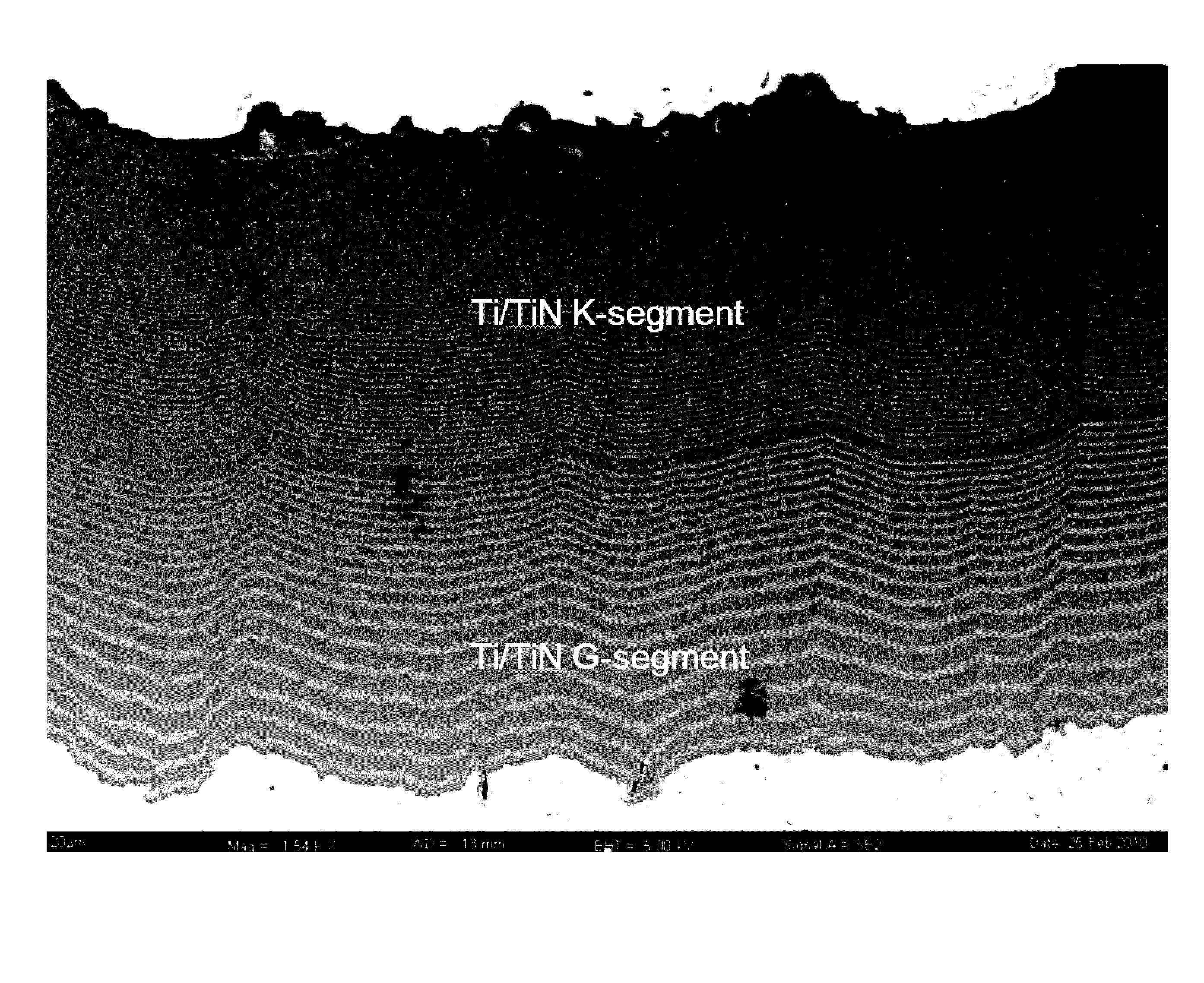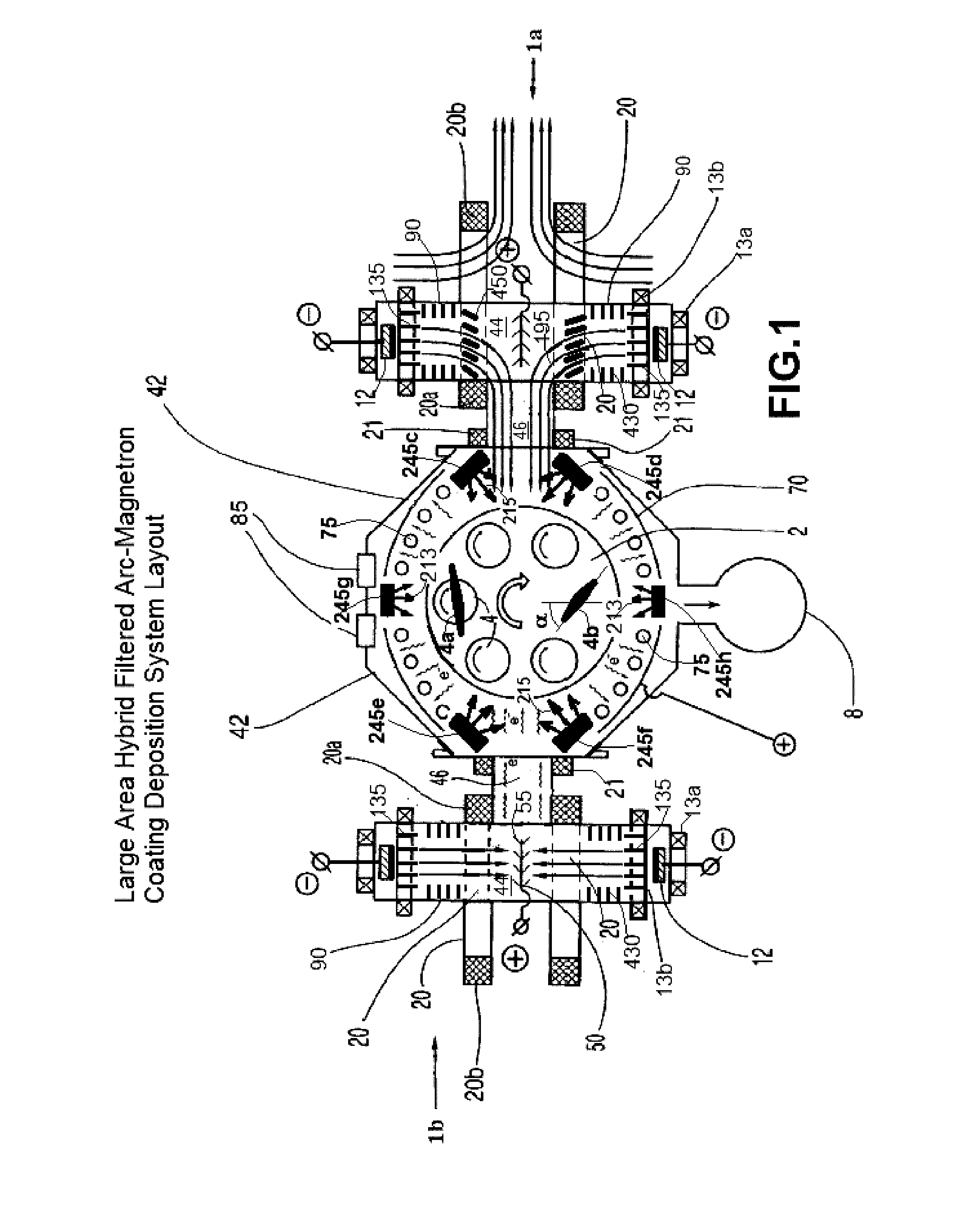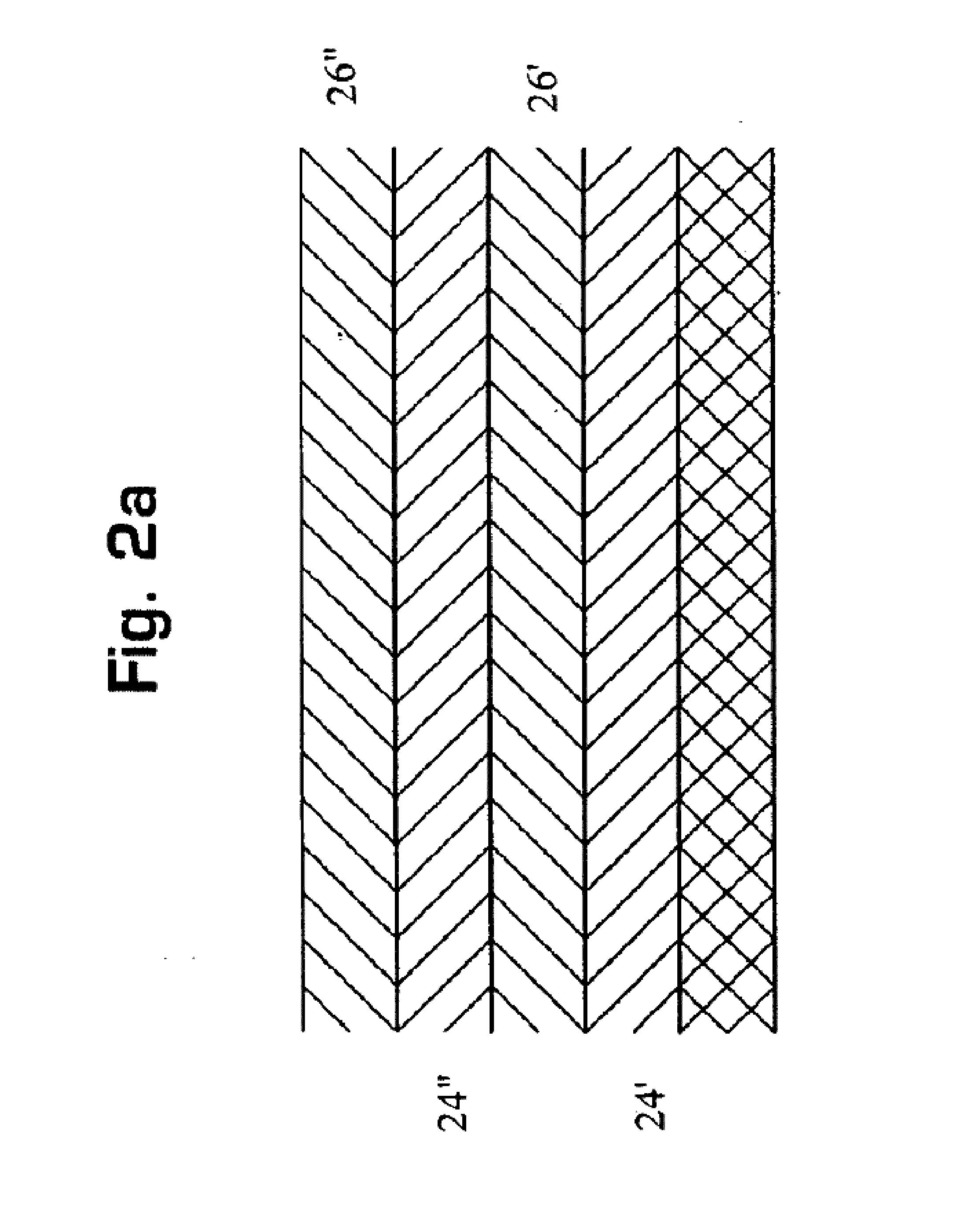Erosion And Corrosion Resistant Protective Coatings For Turbomachinery
a protective coating and corrosion resistance technology, applied in the direction of machines/engines, mechanical equipment, superimposed coating process, etc., can solve the problems of delamination, debonding and delamination of the blade's composite skin, wear, delamination of the rotor blade components, etc., to achieve high flexibility, anti-icing, erosion and corrosion resistance properties, and anti-icing properties. high
- Summary
- Abstract
- Description
- Claims
- Application Information
AI Technical Summary
Benefits of technology
Problems solved by technology
Method used
Image
Examples
example 1
Large Area Filtered Arc Deposition (LAFAD) of Erosion and Corrosion Resistant TiAlN Multilayer Multi-Segment Coating on Metal Sheets, Foils, Instruments and Machine Components
[0078]The arc coating apparatus shown in FIG. 1 is used in this process. The apparatus is equipped with two dual-filtered arc sources, 1a and 1b having round primary cathode targets 12 measuring 3″ in diameter and 2″ in height, one filtered arc source 1a having at least one titanium target, preferably two titanium targets, and the other 1b having at least one aluminum target, preferably two aluminum targets. The filtered arc sources 1a and 1b can operate in magnetic shutter mode: When the deflection magnetic system (magnetic deflection and focusing coils 20 and 21) is activated in magnetic shutter open mode, the metal vapor plasma generated by the cathode targets 12 is transported toward coating chamber 42 to provide metal or metal-ceramic coatings on substrates to be coated 4. When the deflecting magnetic syst...
example 2
Deposition of a 2-Segment Micro-Nano-Laminated Ti / TiN Coating by LAFAD Process
[0081]A Ti / TiN micro-nano-laminated coating was deposited by an LAFAD process on 1″×1″×⅛″ square coupons made of Ti6Al4V alloy. The LAFAD process used in Example 2 is modified version of the process used in Example 1. For example, Example 2 utilizes titanium targets in both primary arc sources while Example 1 had titanium targets in one primary arc source and aluminum targets in the other primary arc source. The coupons 4 were pre-treated by wet blasting prior to being loading into coating chamber 42 of the coating system shown in FIG. 1. Only one unidirectional dual LAFAD source 1a was used in this process. Both primary cathodic arc sources of the LAFAD source 1a were equipped with titanium targets. Substrate coupons 4 were installed on turntable 2 rotating about a single rotation axis at a rotating speed of 12 RPM. In single-rotation (SR) mode, the substrates are rotated around the axis of the turntable ...
example 3
Deposition of TiN Erosion and Corrosion Resistant Coating on Airfoils by Hybrid Filtered Cathodic Arc-Magnetron Sputtering Deposition Process
[0084]In this example, the TiN coating of monolithic coating architecture is applied by hybrid filtered cathodic arc-magnetron sputtering deposition technology for deposition of erosion and corrosion resistant coatings on airfoils of turbine engine. As in Example 2, the coating system shown schematically in FIG. 1 is used for this coating deposition process. The airfoils were installed at turntable 2, for example at the 60° to the radius as shown in airfoil samples 4b, or with double rotation as shown in airfoil sample 4a in FIG. 1. In double rotation, airfoil sample 4a further undergoes rotation about a longitudinal axis of airfoil sample 4a, which is parallel to the rotation axis of turntable 2. All primary cathodic arc sources of the filtered cathodic arc sources 1a and 1b are equipped with cathode targets 12 made of titanium. All targets of...
PUM
| Property | Measurement | Unit |
|---|---|---|
| thickness | aaaaa | aaaaa |
| Ra | aaaaa | aaaaa |
| Ra | aaaaa | aaaaa |
Abstract
Description
Claims
Application Information
 Login to View More
Login to View More - R&D
- Intellectual Property
- Life Sciences
- Materials
- Tech Scout
- Unparalleled Data Quality
- Higher Quality Content
- 60% Fewer Hallucinations
Browse by: Latest US Patents, China's latest patents, Technical Efficacy Thesaurus, Application Domain, Technology Topic, Popular Technical Reports.
© 2025 PatSnap. All rights reserved.Legal|Privacy policy|Modern Slavery Act Transparency Statement|Sitemap|About US| Contact US: help@patsnap.com



